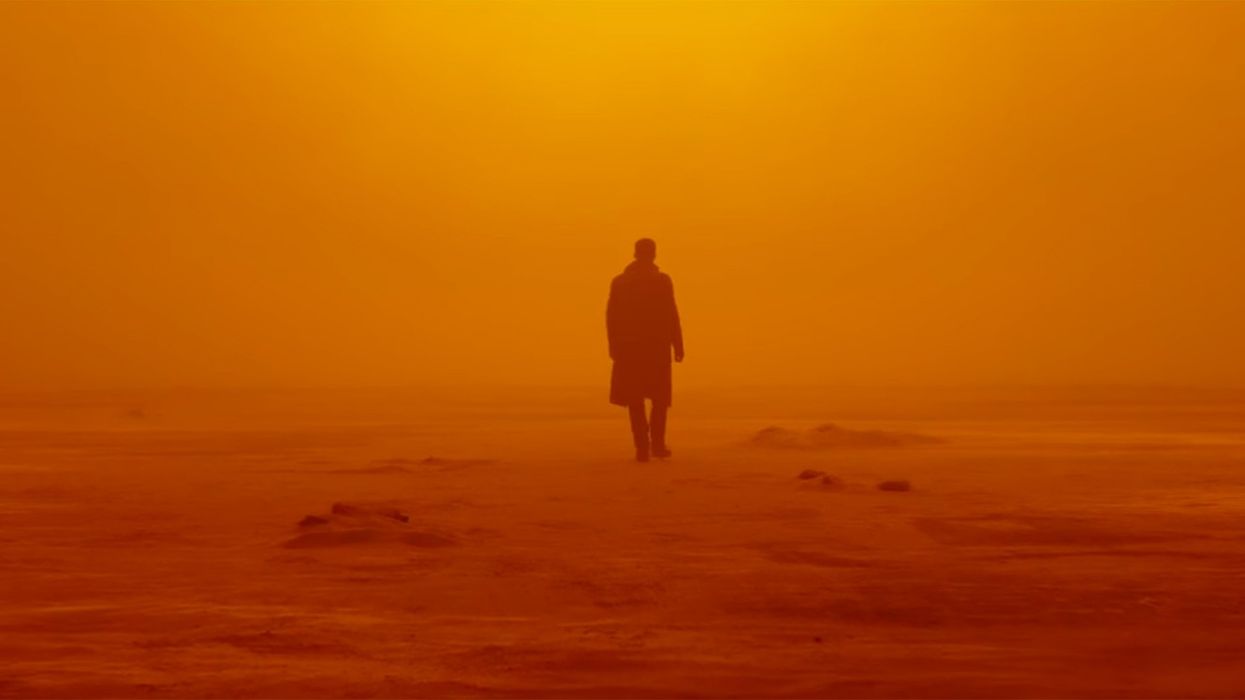Watch: Learn the Power of Silhouettes from the Master Roger Deakins
What do silhouettes tell us about characters and their relationships?

The earliest memories I have of silhouettes are from children's books that showed you how to make figures of animals on the wall with just a lamp and the flexibility/waggability of your fingers. Even then, the silhouette had a vaguely mysterious quality to it. You would think that eliminating all detail from a shape and reducing an image to two essential colors would make your experience of the image all the simpler, but in fact that was not the case; silhouettes seemed to me to be carriers of numerous possibilities for meaning.
The beloved cinematographer Roger Deakins knows this all too well. In his films, he uses the silhouette as a way of pinning characters to an imaginary corkboard. Once they're pinned there, wriggling slightly, we can take a closer look at them. His uses of silhouettes, illuminated beautifully in this video essay by H. Perry Horton, would be worth studying for anyone interested in filmmaking, but particularly for those people learning how light can be exploited to tell a story more fruitfully.
Use silhouettes to define characters and situations in an elegant, crystallized visual portrait.
Build gravity. When Jamie Foxx's Sykes takes a sip from his canteen in Jarhead, the use of silhouette helps us taste the water, helps us understand how hot it must be where he is, how stressful the environment must be. The cinematography combines the relationships described—between soldier and the earth, between soldier and the fires surrounding him, between the soldier and the water he is drinking—into one, but in such a way that we can see each relationship shining through, and we understand the great importance of this seemingly simple moment. Use silhouettes to define characters and situations in an elegant, crystallized visual portrait.

Heighten drama. When the James boys descend, they really descend. In the two shots from The Assassination of Jesse James by the Coward Robert Ford examined in the video, we see the silhouette being used to increase the "shock and awe" value of a moment. In one scene, the James gang runs down a hill, preparing to descend on an unsuspecting party taking place. The lights from the party are bright, the figures of the running men are dim, but the timeless story taking place, that of the hunter seeking out the hunted, is cast into full relief here, as the men's bodies are reduced to running shapes in the darkness.
The same is true for the lone figure of the outlaw, standing in the headlights of an oncoming train, confident the train will not run him over, that closes this piece. The scene pushes tension to the breaking point, but would not be nearly as taut if we saw more details and allowed ourselves to be distracted by them. When crafting a particularly tense scene in a film, consider using the silhouette to ratchet up the tension. Contemplate how you want your viewers to feel, and ponder how the silhouette might implant that feeling on viewers' minds.

Consider the silhouette for stories in which morality plays a huge part.
Show the weight characters carry. In A Beautiful Mind, when we watch John Nash's wife (Jennifer Connelly) walking towards a garage, most likely towards some revelation of her husband's mental state, we sense the difficulty of the small journey she's taking largely because of the use of silhouettes. Her smaller frame in relation to the largeness of the structure she is approaching calls attention to the challenge she faces in her marriage, and in the world at large as a result.
Deakins accomplishes a similar feat in his shot of Denzel Washington's Rubin "Hurricane" Carter, doing pushups in a cell in which he doesn't belong. The use of darkness and light here helps us understand the wrongness of his imprisonment while simultaneously conveying the importance of the pushups to strengthen himself. Consider the silhouette for stories in which morality plays a huge part.

What are some other techniques Deakins uses to particularly good effect? What are some of your favorites? Let us know in the comments.
Featured photo: Blade Runner 2049. Credit: Warner Bros.











